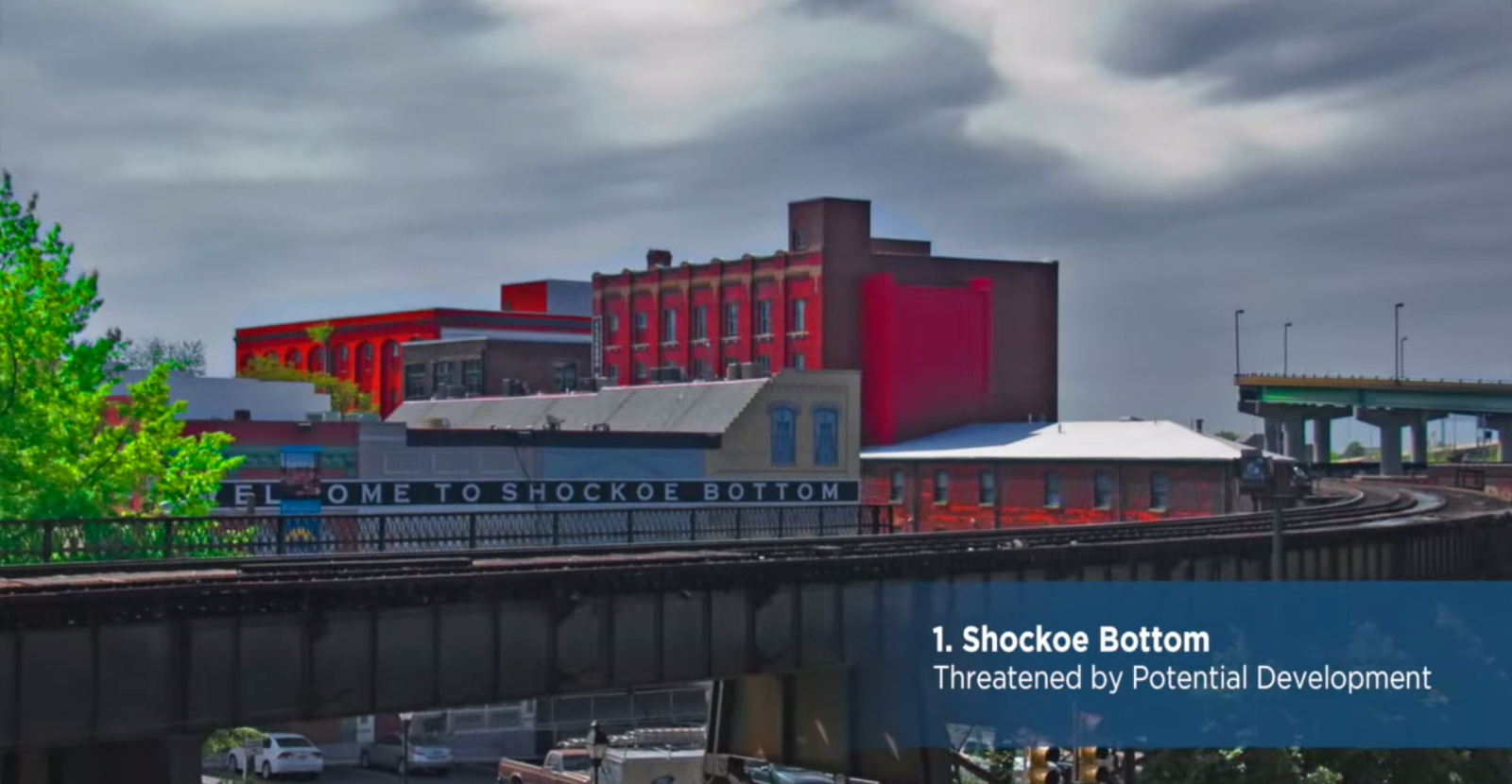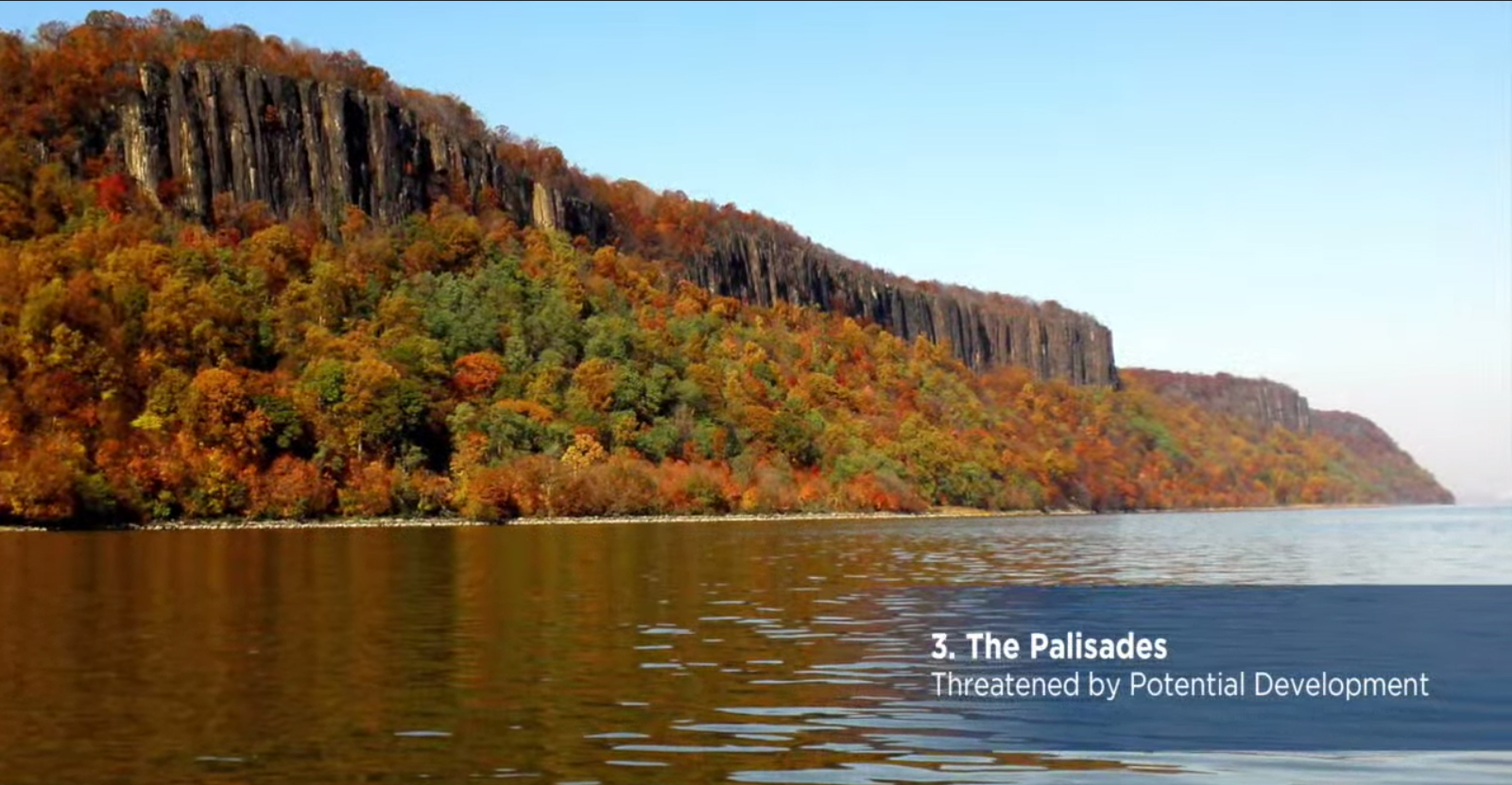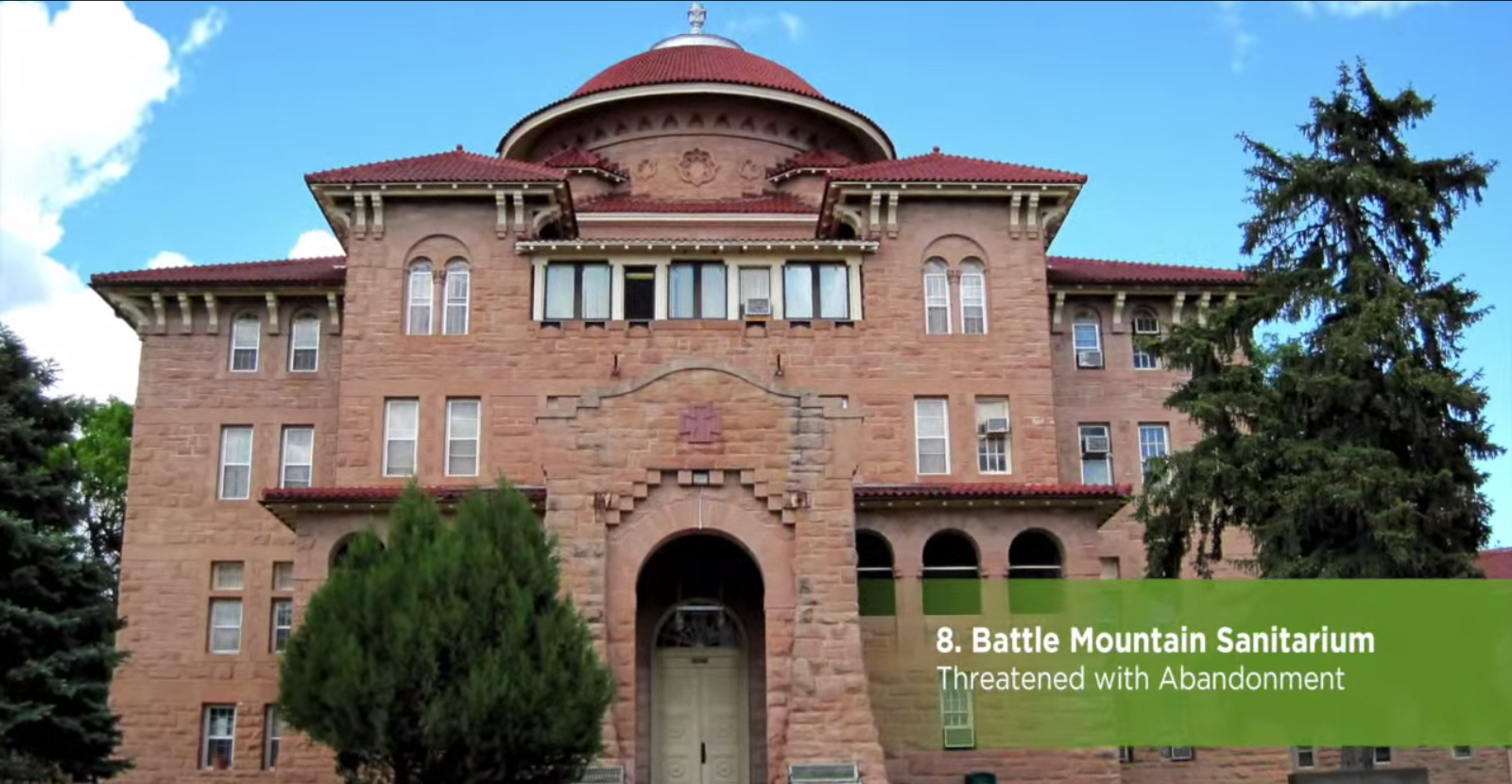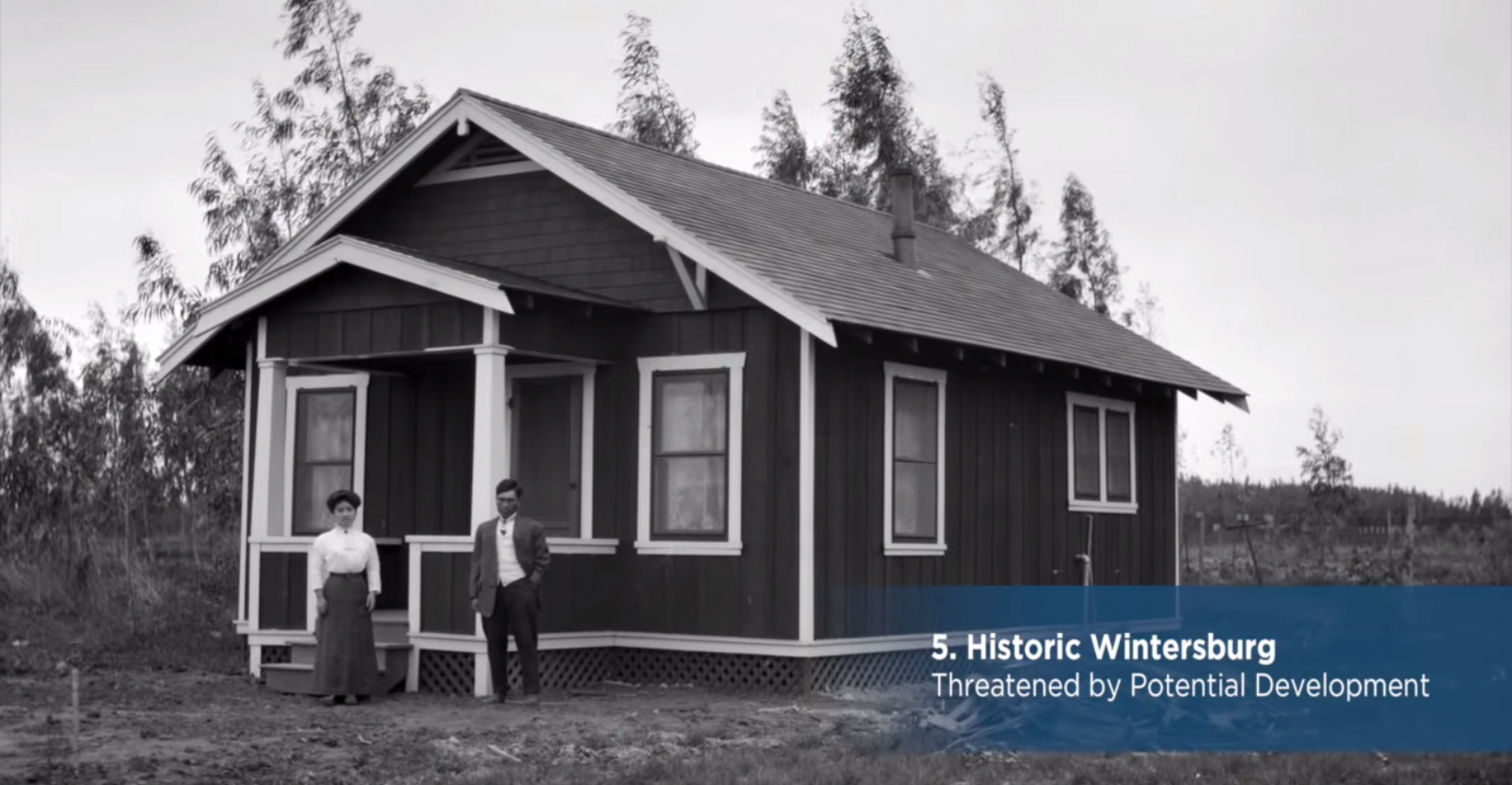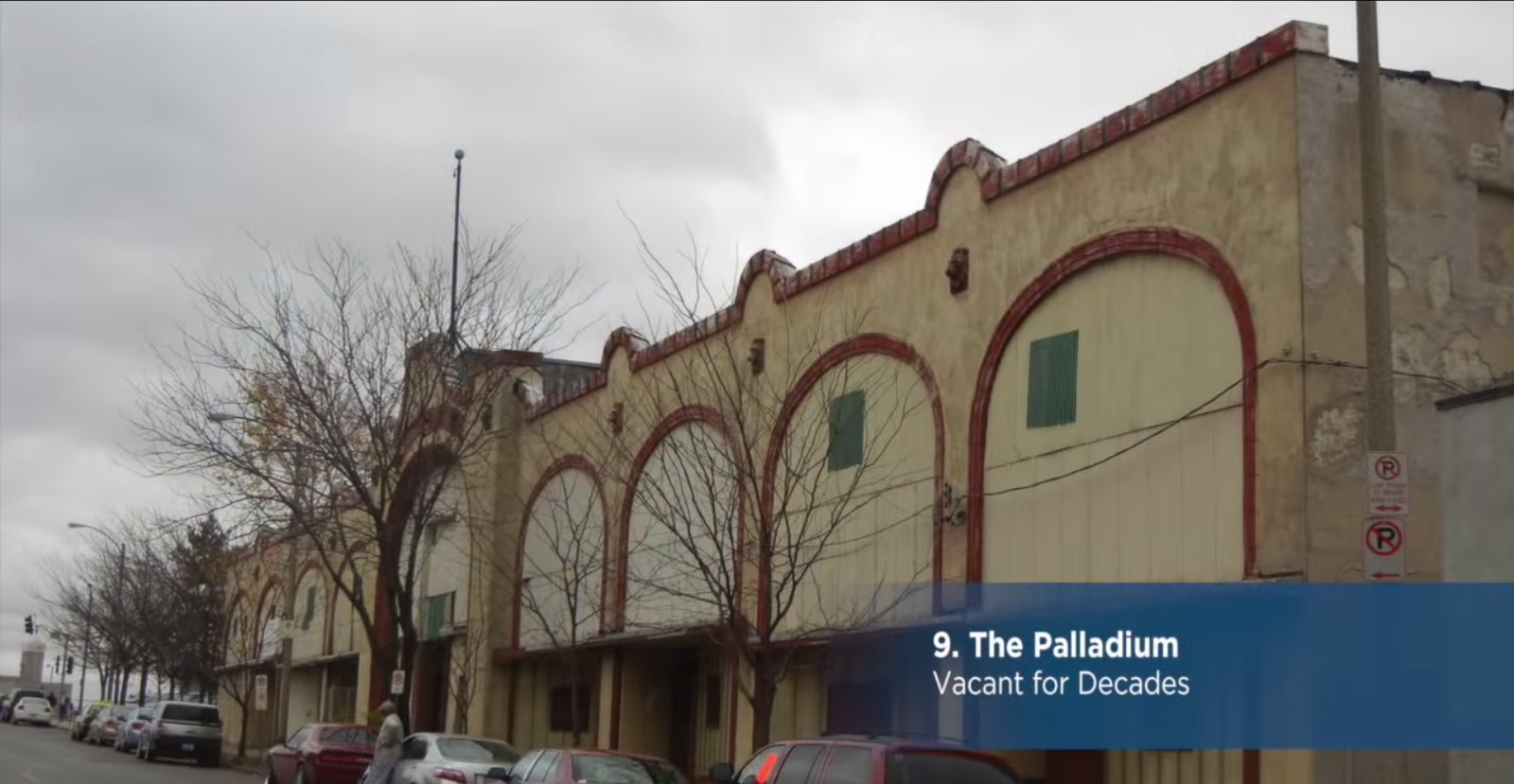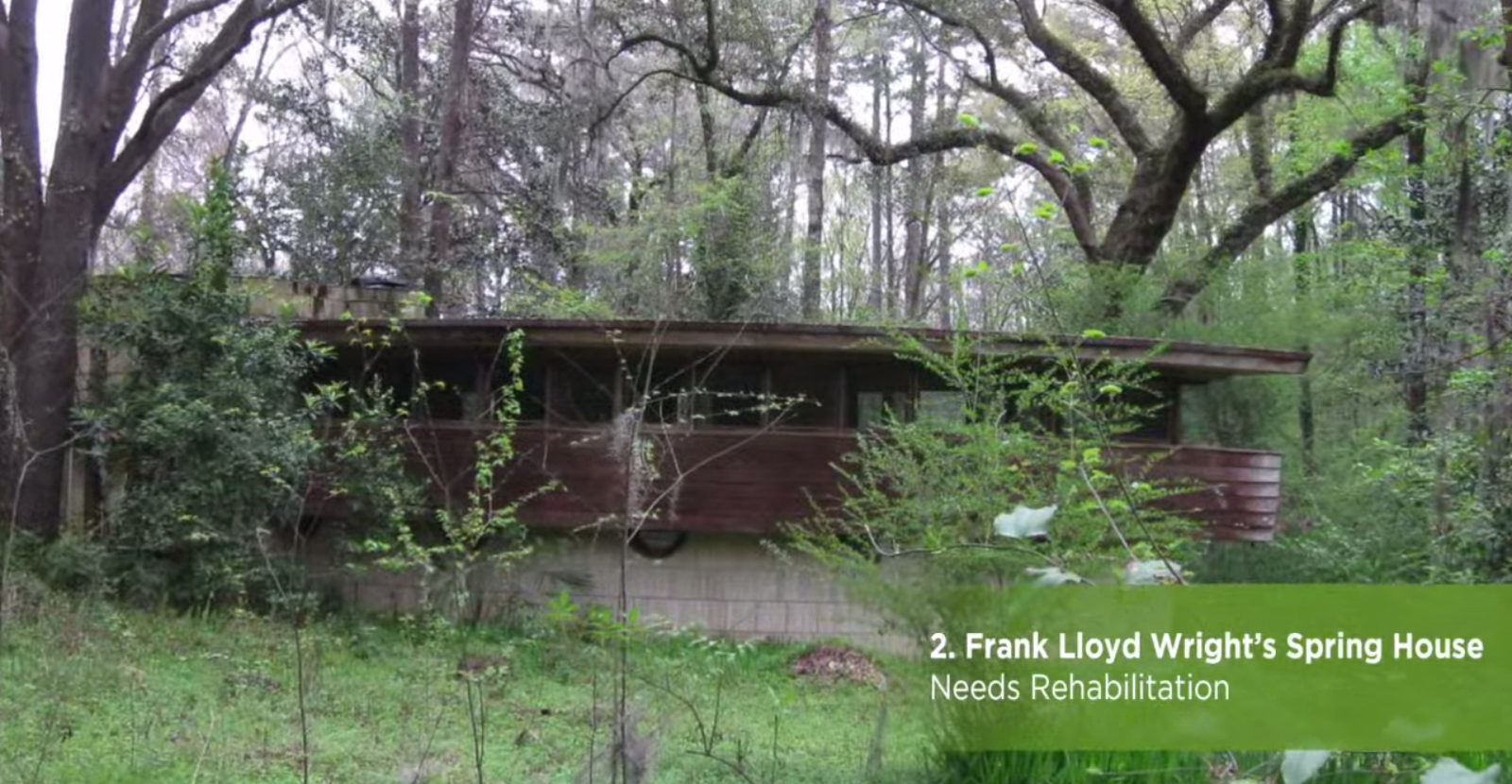See them before you miss them. Or better: take action. For 26 years, the Trust for Historic Preservation has compiled a list of America’s 11 Most Endangered Historic Places as an effort to raise awareness about the threats facing the nation’s greatest treasures of architectural, cultural and natural significance.
This year’s list has a little bit for everyone. From natural landmarks like the Palisades, to grandeur structures like Cincinnati’s Music Hall or simple yet culturally revolutionary architecture like Frank Lloyd Wright’s Spring House, a variety of sites across the United States are threatened by weather damage, natural disaster or pressure for development.
On the brighter side, the National Trust says that thanks to these lists that come out annually, hearts have been touched and communities have been mobilized. Hence, out of the 250 sites listed as endangered, only a handful have been lost.
Here’s a closer look on eight of the sites that made this year’s list in no particular order:
1. Shockoe Bottom, Richmond, Virginia
This site may not look like much, but that’s because the antebellum artifacts are now below the surface. Shockoe Bottom was an important center for the African slave trade between 1830 and 1865, where 350,000 slaves were traded. Among these slaves were Solomon Northup, whose life was chronicled in the Oscars Best Picture winning “12 Years as Slave.” The site is now threatened by plans to build a minor league baseball stadium on it.
The National Trust says: “Shockoe Bottom should be protected as a site of conscience, a place that offers the public a chance to experience, and learn from, this dark chapter in American history. A path forward for Shockoe Bottom should include meaningful public involvement and expert archeological analysis so that the historical remnants of the slave trade now buried there can be seen and properly interpreted.”
2. The Palisades, Englewood Cliffs, New Jersey
Preserving the Palisades is more than preserving a pretty landscape; these cliffs on the Hudson River represent two historically significant stories to the United States. For centuries, the Sanhikan, Hackensack, Raritan and Tappan nations used the cliffs as shelter to protect their people from adverse weather. In the 19th century, the Palisades became the focus of some of the country’s earliest conservation and protection efforts.
A proposal to build an eight story, 143 foot office next to the Palisades would change the scenic view of the Palisades. According to the National Trust, “if construction goes forward, it would represent the first breach of the viewshed in the 100-year history of protecting the Palisades north of the George Washington Bridge.”
3. Battle Mountain Sanitarium, Hot Springs, South Dakota
For over a century Battle Mountain Sanitarium has provided medical care to veterans in the region. It is one of a few properties managed by the U.S. Department of Veterans Affairs (VA) designated as a National Historic Landmark. The facilities are threatened to an uncertain fate as the VA plans to relocate to Rapid City, 60 miles away.
4. Historic Wintersburg, Huntington Beach, California
Underneath the mythical appeal of the Wild West as preserved by Hollywood Western films is a less-known story of California’s diverse settlement since the 19th century. Wintersburg documents three generations of the Japanese-American experience in the United States, and contains six extant pioneer structures and open farmland.
Although the current owners of the property agreed to provide preservationists until mid 2015 to find solutions to save the historic property, demolition of the site remains a possibility.
5. Palladium Building, St. Louis, Missouri
At first glance, this long-neglected and dilapidated building does not look like much. Reality is the Palladium was the largest club of its kind in St. Louis in the 1940s, and pioneers in African American jazz music such as Nat King Cole and Ella Fitzgerald have graced its stage.
6. Music Hall, Cincinnati, Ohio
Built in 1878, the red brick High Victorian Gothic structure features a large auditorium, ornate foyer, offices, carpentry shop, rehearsal rooms, dressing rooms and a ballroom. But despite its grandeur, Music Hall is suffering from deterioration and water damage and is in need of extensive repairs.
7. Frank Lloyd Wright’s Spring House, Tallahassee, Florida
According to the National Trust, the novel hemicycle form “represents a late, and little known, stage in Wright’s long, prolific career.” Constructed in 1954, Spring House is the only built private residence designed by Wright in the state of Florida.
Exposure to hurricanes and winds storms has led to visible damage throughout the interior of the house. Despite the unique design and its association with America’s most famous architect, funds still need to be raised to purchase and restore the house.
8. Union Terminal, Cincinnati, Ohio
The iconic building is one of the country’s last remaining grand-scale Art Deco railroad terminals The massive 180 foot wide and 106 foot tall rotunda is the second largest half dome in the world, and features glass mosaic murals by Winold Reiss depicting the history of Cincinnati and the United States.
The grandeur scale of the structure means restoration costs are hefty, and the station is threatened by deterioration.
To learn more about each site and see the extensive list of endangered landmarks, visit the National Trust’s official page.
Related Stories
K-12 Schools | Apr 30, 2024
Fully electric Oregon elementary school aims for resilience with microgrid design
The River Grove Elementary School in Oregon was designed for net-zero carbon and resiliency to seismic events, storms, and wildfire. The roughly 82,000-sf school in a Portland suburb will feature a microgrid—a small-scale power grid that operates independently from the area’s electric grid.
AEC Tech | Apr 30, 2024
Lack of organizational readiness is biggest hurdle to artificial intelligence adoption
Managers of companies in the industrial sector, including construction, have bought the hype of artificial intelligence (AI) as a transformative technology, but their organizations are not ready to realize its promise, according to research from IFS, a global cloud enterprise software company. An IFS survey of 1,700 senior decision-makers found that 84% of executives anticipate massive organizational benefits from AI.
Codes and Standards | Apr 30, 2024
Updated document details methods of testing fenestration for exterior walls
The Fenestration and Glazing Industry Alliance (FGIA) updated a document serving a recommended practice for determining test methodology for laboratory and field testing of exterior wall systems. The document pertains to products covered by an AAMA standard such as curtain walls, storefronts, window walls, and sloped glazing. AAMA 501-24, Methods of Test for Exterior Walls was last updated in 2015.
MFPRO+ News | Apr 29, 2024
World’s largest 3D printer could create entire neighborhoods
The University of Maine recently unveiled the world’s largest 3D printer said to be able to create entire neighborhoods. The machine is four times larger than a preceding model that was first tested in 2019. The older model was used to create a 600 sf single-family home made of recyclable wood fiber and bio-resin materials.
K-12 Schools | Apr 29, 2024
Tomorrow's classrooms: Designing schools for the digital age
In a world where technology’s rapid pace has reshaped how we live, work, and communicate, it should be no surprise that it’s also changing the PreK-12 education landscape.
Adaptive Reuse | Apr 29, 2024
6 characteristics of a successful adaptive reuse conversion
In the continuous battle against housing shortages and the surplus of vacant buildings, developers are turning their attention to the viability of adaptive reuse for their properties.
AEC Innovators | Apr 26, 2024
National Institute of Building Sciences announces Building Innovation 2024 schedule
The National Institute of Building Sciences is hosting its annual Building Innovation conference, May 22-24 at the Capital Hilton in Washington, D.C. BI2024 brings together everyone who impacts the built environment: government agencies, contractors, the private sector, architects, scientists, and more.
Mass Timber | Apr 25, 2024
Bjarke Ingels Group designs a mass timber cube structure for the University of Kansas
Bjarke Ingels Group (BIG) and executive architect BNIM have unveiled their design for a new mass timber cube structure called the Makers’ KUbe for the University of Kansas School of Architecture & Design. A six-story, 50,000-sf building for learning and collaboration, the light-filled KUbe will house studio and teaching space, 3D-printing and robotic labs, and a ground-level cafe, all organized around a central core.
Sports and Recreational Facilities | Apr 25, 2024
How pools can positively affect communities
Clark Nexsen senior architects Jennifer Heintz and Dorothea Schulz discuss how pools can create jobs, break down barriers, and create opportunities within communities.
Senior Living Design | Apr 24, 2024
Nation's largest Passive House senior living facility completed in Portland, Ore.
Construction of Parkview, a high-rise expansion of a Continuing Care Retirement Community (CCRC) in Portland, Ore., completed recently. The senior living facility is touted as the largest Passive House structure on the West Coast, and the largest Passive House senior living building in the country.



